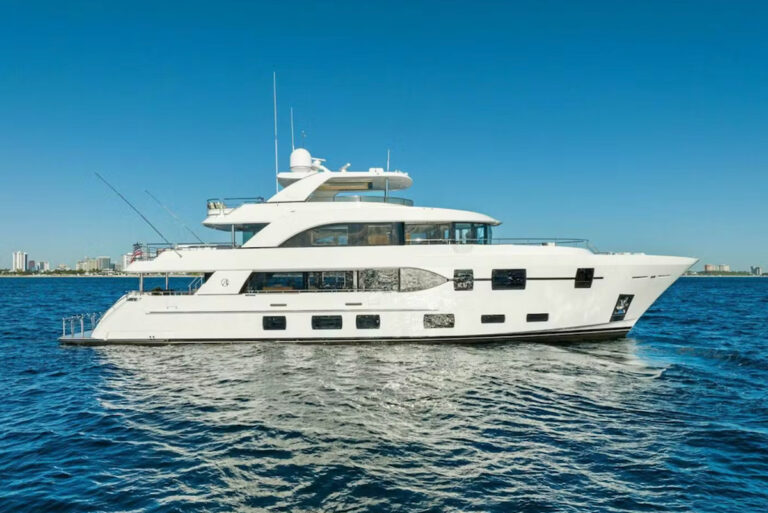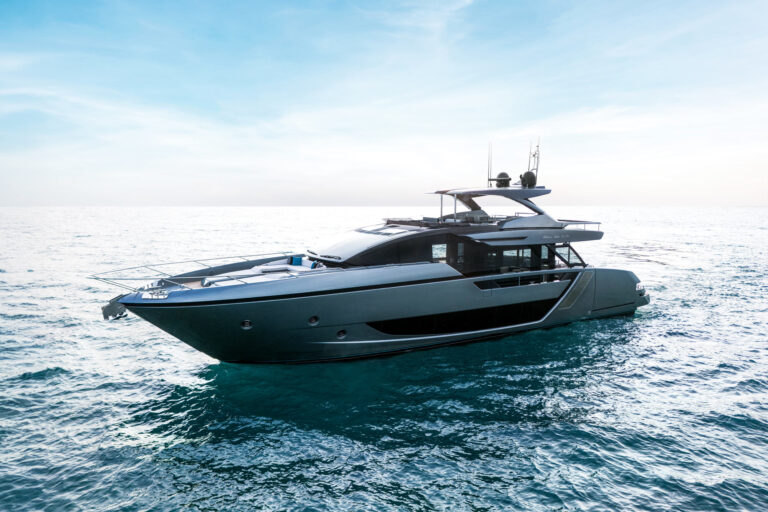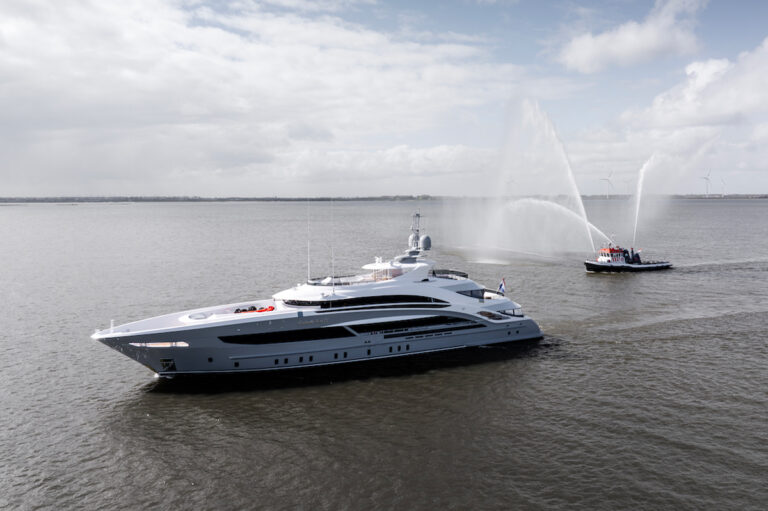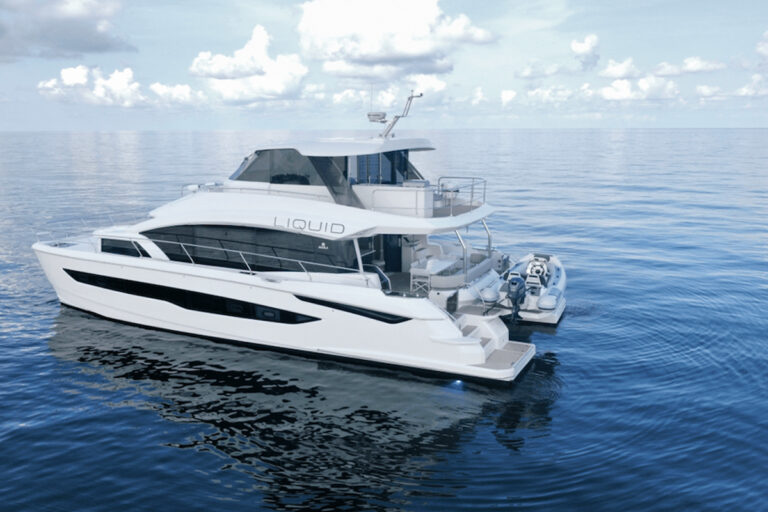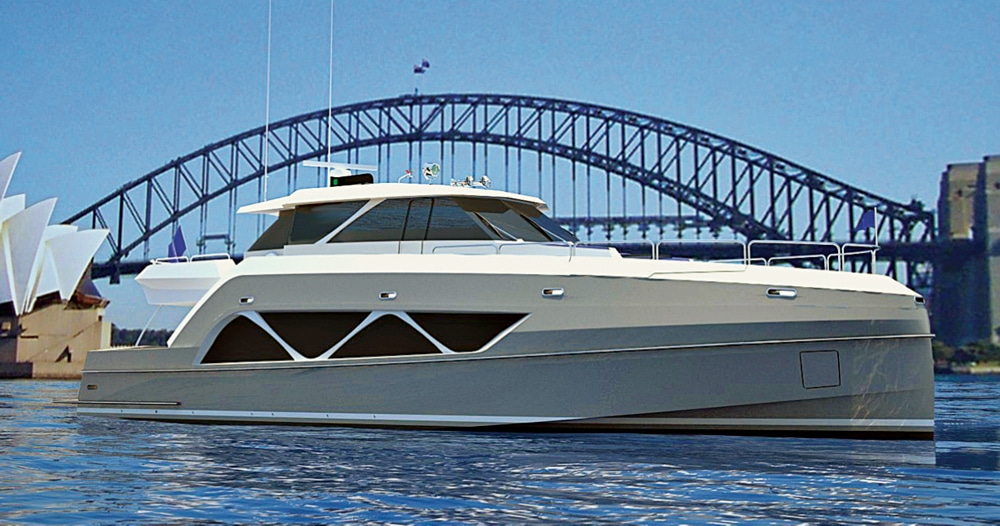
Hyundai Yachts ASAN 62 Motoryacht
Hyundai Yachts wanted an ultracontemporary design for its ASAN line — one that would also offer yachtsmen maximal, and useful, interior volume. As often happens in yacht design, Bill Prince turned to the past, and to a workboat, for inspiration in solving the competing requirements.
Designers of modern motoryachts almost universally rely on sleek compound curves and dramatic sweeps to achieve a contemporary look. This trend coincides with automotive designers’ quest for attractive exteriors combined with efficient aerodynamics, both of which compromise space within the cabin. What to do if you want a large interior? Make the cars larger or make them look like a London taxi or a Nissan Cube.
The same principle applies to boats of all sizes. If you want the largest possible interior on a given length and beam, put a box on a barge. If you want it to look very cool and ultramodern, you could adapt the basic design criteria from a Great Lakes commercial gill-net boat, as Prince has done. (You can get a good look at these boats by going to www.flickr.com and typing “gill-net boats great lakes” in the search box.) These boats look the way they do — wall sides, flush deck and centered pilothouse — to give the fisherman a massive hold for his catch.
Prince’s approach is definitely “outside the box,” but the result is exactly what the client requested. The interior of the ASAN 62 has three staterooms and three heads, a full-beam lounge area amidships and a galley/dinette all the way aft. Prince said that this 62-footer has as much volume belowdecks as you’ll find in a typical yacht of 75 to 80 feet. The pilothouse has an L-shape settee, a head and a staircase that leads to the galley and spaces belowdecks.
Wrapping all this volume in an alluring package required a certain level of free association. Plumb ends anchor this design and provide it with a waterline length that nearly equals the overall length. What’s more, Prince likes the look of plumb stems, but to reduce the abruptness of the purely vertical, he’s drawn tumblehome in the transom and at the bow where the stem engages the superstructure. That’s right — superstructure. The sheer line of the ASAN 62’s hull is really at the rub rail. Slicing away everything above that line leaves a perfectly fine hull on which Prince can draw any number of new designs. The same concept gives commercial gill-net boats their astonishing aesthetic variety.
The superstructure grows from the stem at an angle that also appears in the rake of the windshield and in the engineering truss. Then it flattens and continues to rise as you follow it aft, creating a wedge. This wedgelike shape gives the ASAN an aggressive look, maybe warning observers that they’ve met a fast and seaworthy yacht. It also visually reduces the yacht’s imposing height, as does beveling the top of the structure along its entire length. Scuppers indicate the level of the side decks, which are very wide, but because they are above the accommodations, they don’t encroach on the space below. High bulwarks add to the safety of anyone who goes forward while the boat is under way.
Prince also used the bevel to good effect on the sun deck off the pilothouse, where it unifies the design visually and makes that part of the structure seem almost delicate. The truss in the side window of the pilothouse, identical in shape and angle to the one below, establishes the relationship between the house and the structure below it.
Kudos to Prince and Hyundai Yachts for having the courage and creative ability to bring yachtsmen something truly new and different.
LOA: 62’6″
LWL: 62’4″
Beam: 18’6″
Draft: 4’10”
Displ.: 78,000 lb.
Fuel: 1,400 gal.
Water: 250 gal.
Power: 3 x Volvo IPS 900s
Bill Prince Yacht Design, (727) 403-1611; www.billprinceyachtdesign.com; Hyundai Yachts, www.hdyachts.com





